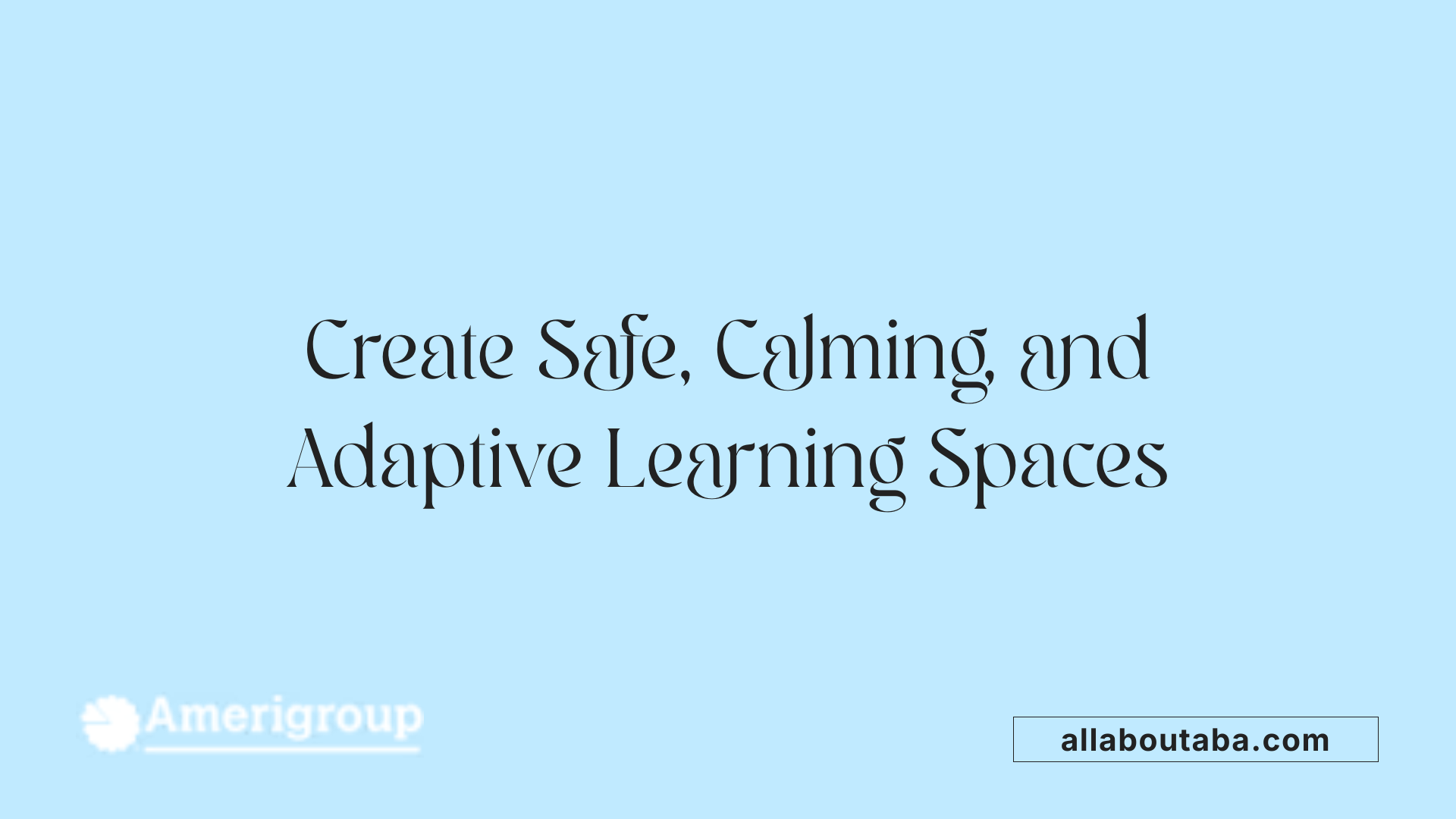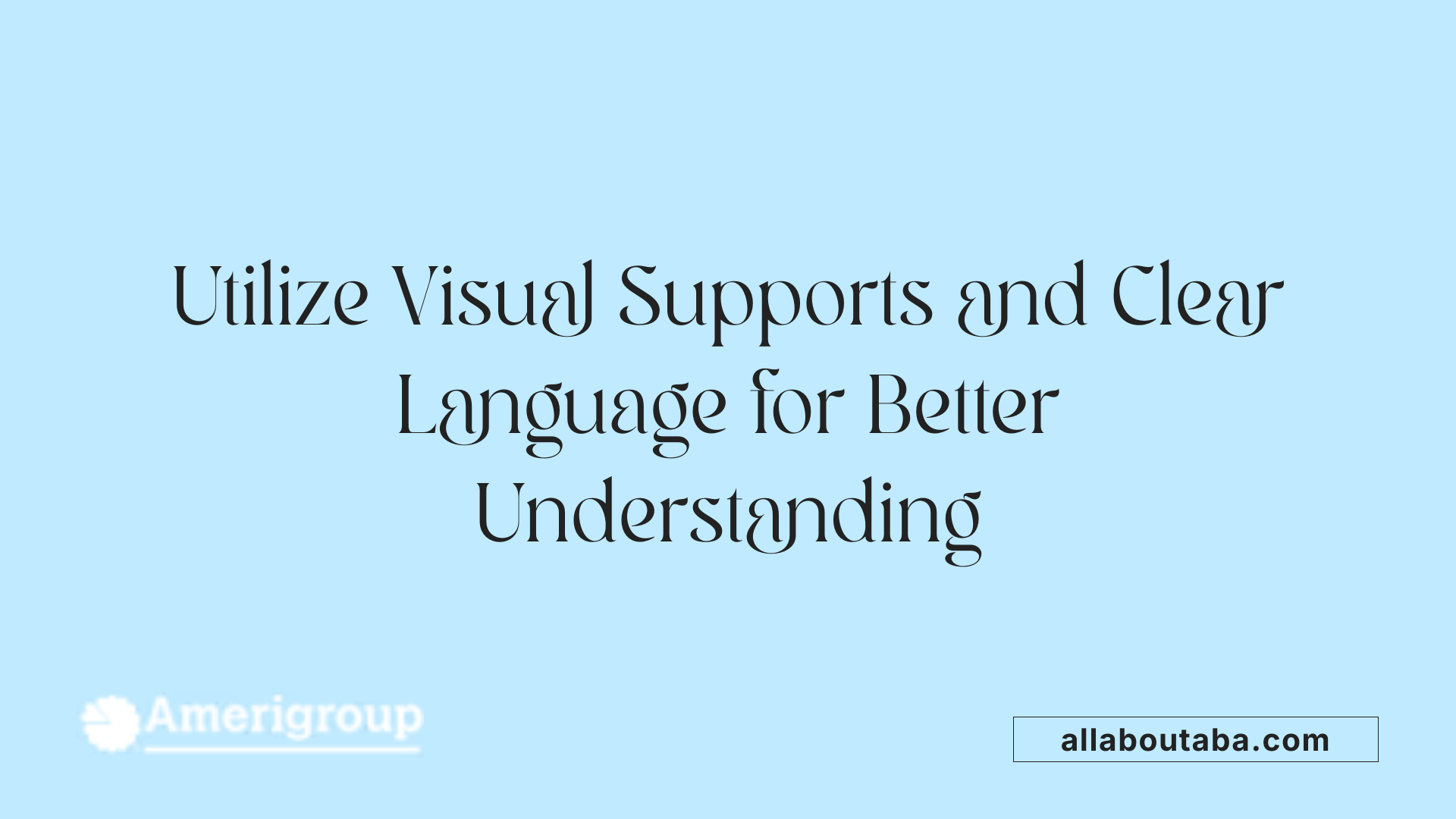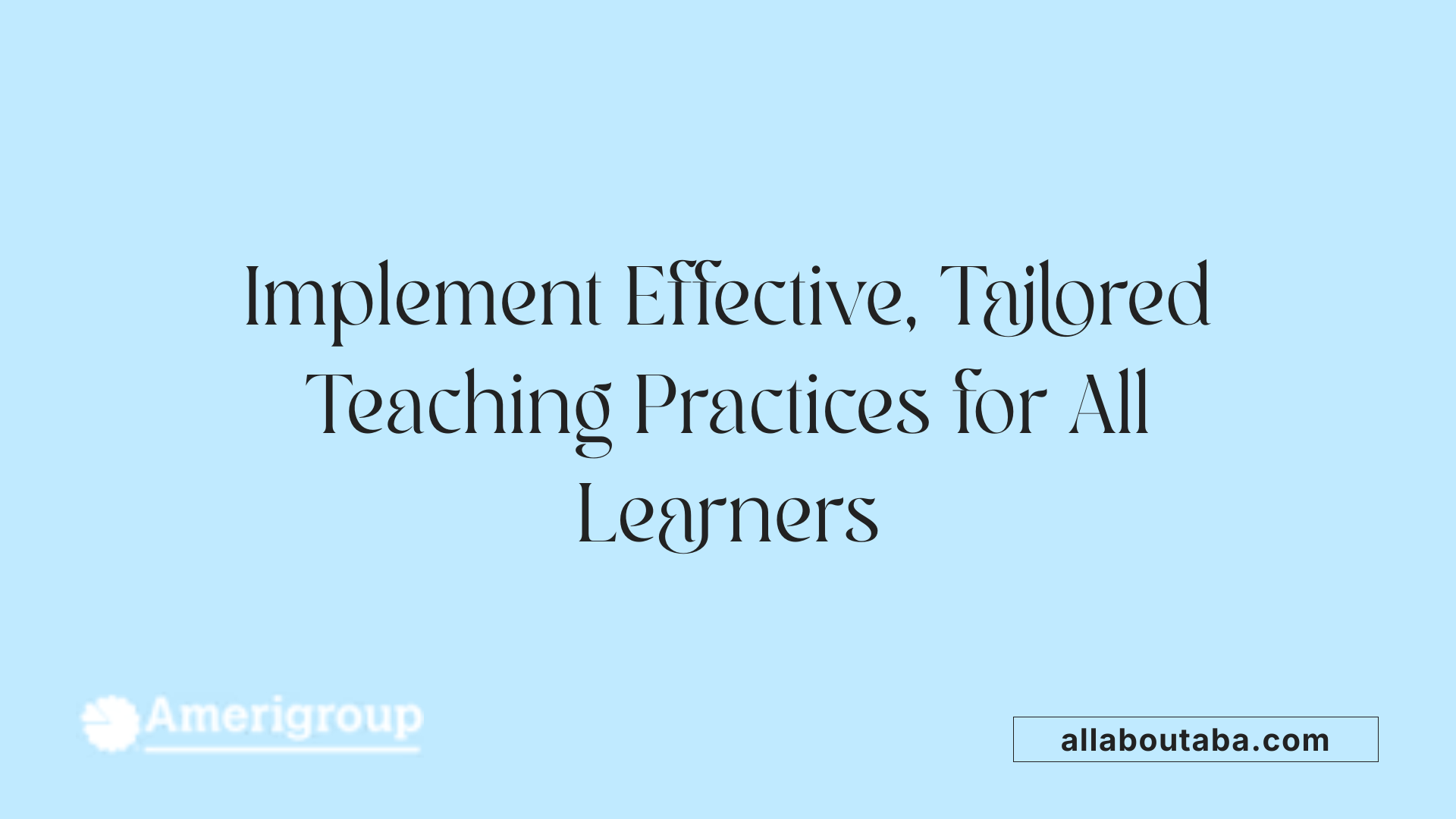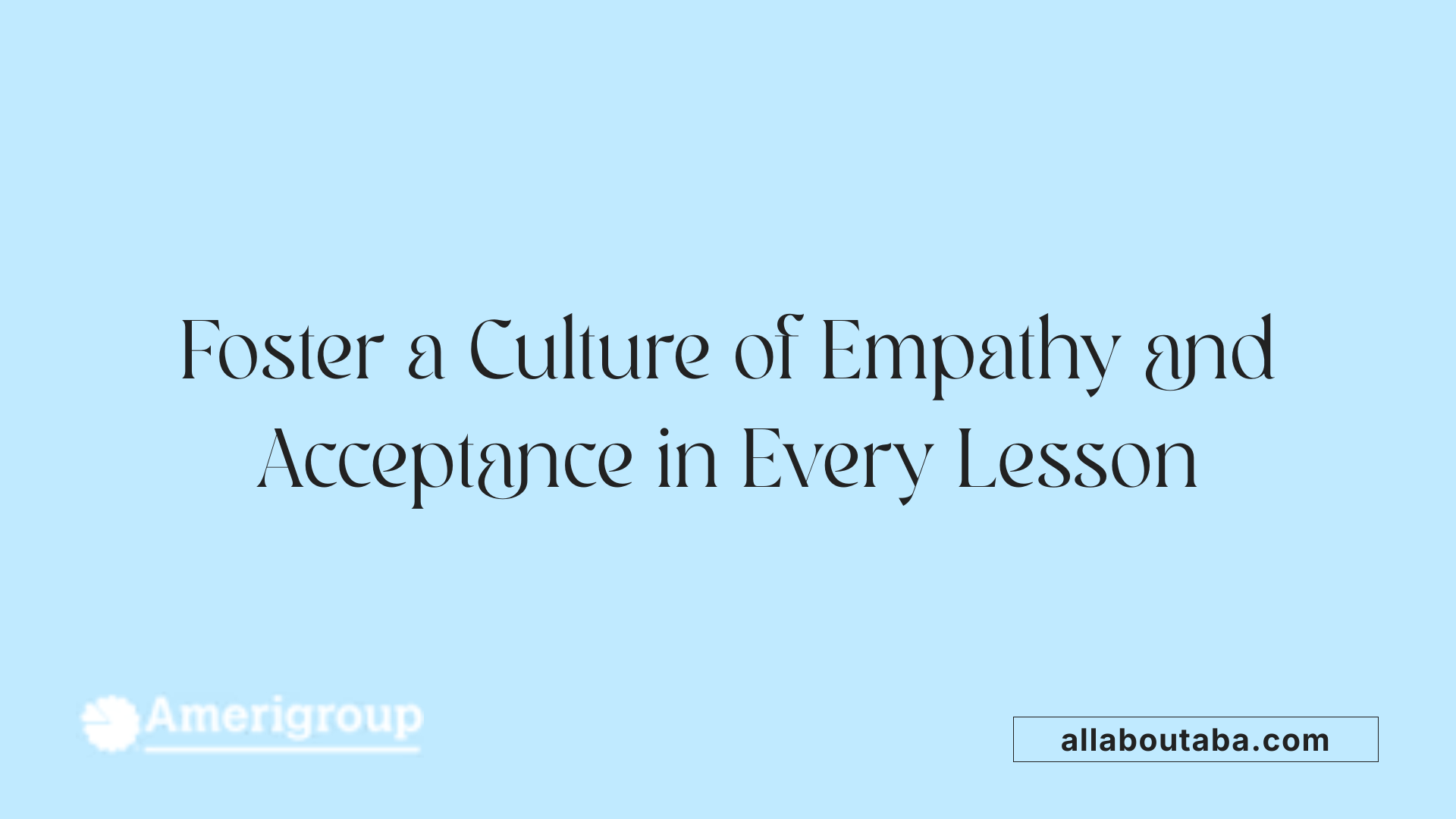Understanding the Foundation of Inclusive Education for Autistic Students
Inclusive education involves integrating students with autism into mainstream classrooms, promoting social understanding, and fostering acceptance among all students. This approach is grounded in evidence-based practices that respect individual differences and tailor support to each learner's needs. Over 30 years of research support the notion that positive academic and social outcomes are closely linked to the degree of inclusion and the quality of support provided. Creating an inclusive environment requires a comprehensive understanding of autism, collaborative planning among educators, families, and specialists, and a proactive commitment to fostering a culture of respect and acceptance.
Designing Supportive Classroom Environments
 Creating a classroom environment that is welcoming and accommodating for students with autism involves thoughtful modifications tailored to their specific needs. Customizing support through various strategies helps minimize barriers and enhances learning, social interactions, and emotional regulation.
Creating a classroom environment that is welcoming and accommodating for students with autism involves thoughtful modifications tailored to their specific needs. Customizing support through various strategies helps minimize barriers and enhances learning, social interactions, and emotional regulation.
One of the foundational aspects is establishing structured routines. Autistic children tend to thrive in predictable environments, so implementing consistent daily schedules and routines can help ease anxiety and provide a sense of stability. Visual supports such as visual schedules, timers, and choice boards serve as effective tools for helping students understand the sequence of activities, manage transitions, and make decisions confidently.
Sensory accommodations are also vital. Many autistic students experience sensory sensitivities that can overwhelm them in typical classroom settings. Providing sensory-friendly spaces, noise-canceling headphones, soft lighting, and fidget toys can help manage sensory overload. Designating calming corners or quiet zones allows students to self-regulate during moments of sensory distress.
In addition, offering flexible seating options like stand-up desks, bean-bag chairs, or wobble stools can support varied sensory needs and improve focus. These options give students control over their physical comfort, aiding concentration and emotional regulation.
By combining these modifications—structured routines, visual supports, sensory accommodations, and flexible seating—teachers can foster an inclusive atmosphere that promotes independence and active participation for students with autism. Tailoring these supports to each student’s profile ensures that their learning environment is both safe and nurturing, ultimately leading to better educational and social outcomes.
| Modification Type | Examples | Benefits |
|---|---|---|
| Structured routines | Visual schedules, predictable daily activities | Reduces anxiety, increases independence |
| Visual supports | Timers, visual cue cards, choice boards | Clarifies expectations, aids communication |
| Sensory accommodations | Noise-canceling headphones, calming corners, sensory tools | Eases sensory overload, supports regulation |
| Seating options | Stand-up desks, wobble stools, bean-bag chairs | Improves focus, supports sensory needs |
Supporting inclusive education involves ongoing adaptation and personalized strategies. Teachers are encouraged to regularly assess the effectiveness of modifications and involve students and parents in planning. For additional resources, searching terms like "Classroom modifications for autism support" can provide comprehensive guidance tailored to diverse needs.
Implementing Visual Supports and Clear Communication Strategies

How can educators facilitate autism-friendly learning environments?
Educators can support students with autism by incorporating various visual supports and employing straightforward communication methods. Visual schedules are a fundamental tool, providing students with a clear visual outline of the day’s activities. These schedules often include pictures, symbols, or written words, helping students understand and anticipate their routines, which can significantly reduce anxiety and increase independence.
Along with visual schedules, visual timers are effective in helping students grasp the concept of time and prepare for transitions. These timers visually indicate how much time remains for an activity, easing impatience and uncertainty. Communication boards, featuring pictures, symbols, or words, also serve as alternative communication tools, enabling non-verbal or minimally verbal students to express their needs and thoughts confidently.
Using concrete, simple language is crucial. Educators should avoid idiomatic expressions or sarcasm, opting instead for clear, literal instructions. Breaking down complex tasks into smaller, manageable steps with visual checklists supports better understanding and reduces cognitive overload.
Creating an autism-friendly classroom involves establishing predictable routines reinforced by visual cues. Sensory-friendly areas equipped with tools such as fidget toys, noise-canceling headphones, and calming lighting allow students to self-regulate sensory overload.
Additionally, fostering an inclusive environment through peer support, social stories, and collaborative activities encourages social skills development. Tailoring teaching strategies to individual needs by collaborating with specialists and families—factoring in each child's strengths, interests, and sensitivities—ensures a nurturing and accommodating learning space.
In sum, visual supports like schedules, timers, communication boards, paired with consistent, clear language and sensory accommodations, form the backbone of effective, autism-sensitive teaching. These strategies not only aid comprehension but also promote comfort, independence, and social integration—paving the way for meaningful inclusion.
Incorporating Evidence-Based Strategies for Inclusion

What are evidence-based strategies for supporting inclusive education for autistic students?
Supporting autistic students in inclusive classrooms requires the use of proven, practical strategies that promote their academic, social, and emotional growth. One foundational approach is the consistent use of visual supports. These include visual schedules, labels, and color-coded cues that help students understand routines, expectations, and tasks. Visual aids are especially effective because many autistic children learn better through visual information, which reduces confusion and anxiety.
Creating structured routines is another vital element. Consistent daily schedules offer predictability, allowing students to feel safe and understand what comes next. Clear, straightforward instructions broken into smaller, manageable steps facilitate comprehension. Teachers can also integrate students' interests—including special interests—into lessons to increase motivation and engagement.
Social stories and role-playing activities serve as powerful tools to develop social skills and positive behaviors. Social stories are customized narratives that prepare children for various social situations by explaining expected behaviors and social cues. Complementing these are reward systems, such as token economies or praise, which reinforce desired behaviors and motivate participation. Using these reinforcement methods, aligned to the child's developmental level, fosters a positive classroom environment.
Creating sensory-friendly environments is equally important. This involves providing calming spaces with tools like noise-canceling headphones, fidget toys, and flexible seating options to help manage sensory overload, which is common among autistic students.
Professional development plays a crucial role. Teachers trained in autism-specific strategies—such as those based on the TEACCH model or the Incredible Years program—are better equipped to tailor instruction and accommodations. Emphasizing collaboration with families and specialists ensures that support is individualized and consistent across settings.
Finally, fostering an inclusive school culture rooted in understanding and acceptance enhances the success of these strategies. Initiatives that promote peer understanding, anti-bullying, and social integration create a supportive environment where all students can thrive.
Effective Teaching Strategies for Inclusive Classrooms

What teaching strategies support the inclusion of autistic students?
Supporting autistic students in inclusive classrooms requires a combination of evidence-based teaching practices tailored to their specific needs. Visual supports are fundamental; tools like visual schedules, checklists, and color-coded materials help students understand routines and expectations, which reduces confusion and builds independence.
Reward and reinforcement systems play a crucial role in motivating students and encouraging positive behaviors. Using tangible tokens such as a token economy, along with verbal praise or descriptive comments, shows students that their efforts are appreciated, fostering a positive classroom climate.
Sensory accommodations are essential for managing sensory overload and promoting focus. Creating sensory-friendly spaces, offering tools like noise-canceling headphones, fidget toys, and flexible seating options allow students to self-regulate. Scheduled sensory breaks, such as quiet times or sensory corners, help students reset and stay engaged.
Developing social skills involves structured activities like social stories, role-playing, and peer-assisted learning. Fostering peer relationships through buddy systems and group activities helps students with autism practice social interactions, build friendships, and develop confidence.
In addition to these strategies, involving each student’s interests and strengths can motivate learning. Clear, simple language, combined with alternative communication methods, ensures that instructions are understandable. Creating a supportive, inclusive environment where diversity is valued helps all students participate actively.
Overall, these approaches promote meaningful participation, improve emotional regulation, and support social development, contributing to a successful inclusive learning experience for autistic students.
Fostering Positive Social and Peer Interactions

How can peer buddy systems improve social inclusion for students with autism?
Implementing peer buddy systems is a highly effective way to promote social inclusion. These systems pair autistic students with non-autistic peers who help facilitate social interactions, model appropriate behaviors, and provide support during activities. The presence of a buddy encourages inclusion, reduces feelings of isolation, and helps develop friendships. Such early social pairing fosters understanding and empathy among students, creating a more welcoming classroom environment.
What role does social skills training play in inclusive education?
Social skills training is essential to equip autistic students with the tools they need to navigate social situations confidently. These programs often incorporate structured activities, role-plays, and visual supports to teach essential skills such as sharing, turn-taking, initiating conversations, and understanding social cues. Regular practice of these skills in a safe, supportive setting boosts peer interactions and helps autistic children build meaningful relationships.
How can role-play activities support social development?
Role-playing provides a practical way for autistic students to practice social interactions in a controlled environment. Through guided scenarios, students learn how to respond appropriately to various social cues and situations, such as greeting a peer or asking for help. These activities also enable teachers to model positive behaviors, reinforce understanding of social norms, and build confidence. Consistent role-play exercises can lead to more natural social exchanges in everyday classroom life.
How do positive social behaviors benefit students with autism?
Promoting positive social behaviors contributes significantly to the overall well-being and academic success of autistic students. When students demonstrate appropriate social interactions—such as sharing, turn-taking, and respectful communication—they are more likely to participate actively in class and social groups. Reinforcing these behaviors through praise and rewards encourages ongoing social engagement, helps reduce behavioral challenges, and fosters an inclusive classroom culture.
| Strategy | Purpose | Implementation Tips |
|---|---|---|
| Peer buddy systems | Promote social bonds and support | Pair students with compatible interests and provide guidance. |
| Social skills training | Develop essential social competencies | Use visual aids, role-play, and reinforcement techniques. |
| Role-play activities | Practice social scenarios in a safe space | Incorporate real-life situations relevant to students’ lives. |
| Reinforcing positive behaviors | Encourage ongoing social engagement | Use praise, tokens, and descriptive feedback. |
Creating an inclusive environment requires understanding that fostering strong peer relationships not only benefits autistic students but also promotes empathy and respect among all learners. Strategies like buddy programs, social skills education, role-playing, and reinforcement of positive interactions are vital components. They build social competence, reduce social barriers, and ultimately lead to a more accepting school community.
Building an Empathetic and Acceptance-Oriented Classroom Culture
 Creating a classroom environment rooted in empathy and acceptance is crucial for supporting students with autism. This approach begins with fostering neurodiversity awareness among teachers, students, and staff, which enhances understanding and reduces misconceptions about autism. Implementing anti-bullying programs that specifically address exclusion and stigma helps create a safe space where all students feel valued.
Creating a classroom environment rooted in empathy and acceptance is crucial for supporting students with autism. This approach begins with fostering neurodiversity awareness among teachers, students, and staff, which enhances understanding and reduces misconceptions about autism. Implementing anti-bullying programs that specifically address exclusion and stigma helps create a safe space where all students feel valued.
A student-centered approach prioritizes individual needs and strengths, encouraging respectful relationships and active participation. Teachers are encouraged to integrate inclusive values into daily routines, promoting kindness, patience, and respect for human differences.
Best practices in inclusive education involve utilizing evidence-based strategies such as visual supports, social stories, and structured routines. Visual cues like picture schedules clarify daily expectations and reduce uncertainty, while social stories prepare students for transitions and social interactions. Sensory-friendly spaces, such as quiet corners equipped with noise-canceling headphones and fidget toys, help manage sensory overload and support self-regulation.
Fostering positive peer relationships is vital. Initiatives like buddy systems and group activities develop social skills, empathy, and a sense of belonging for students with autism. Collaboration with families and special education professionals ensures programs are tailored to each learner’s unique profile—further reinforced by ongoing professional development for teachers.
An inclusive classroom values exploration of students’ interests and strengths, encouraging participation through flexible routines and personalized supports. Respect for each student’s communication preferences and individual abilities builds confidence and promotes equality.
Research highlights that effective inclusive environments are characterized by predictable routines, sensory adaptations, and strong peer connections. These are supported by a school culture that emphasizes acceptance, collaboration, and respect, ultimately benefiting all students and cultivating a community that celebrates differences.
| Aspect | Strategies | Purpose/Impact |
|---|---|---|
| Awareness and Attitudes | Neurodiversity training, anti-bullying programs, inclusive policies | Reduce stigma, promote respect |
| Daily Routines | Visual schedules, structured routines, transition notices | Reduce anxiety, support independence |
| Sensory Supports | Sensory corners, noise-canceling headphones, fidget tools | Manage overload, enhance focus |
| Social Inclusion | Buddy programs, group activities, social stories | Build friendships, social skills |
| Teacher and Family Collaboration | Individualized supports, ongoing communication | Tailor support, reinforce learning |
| Environment Design | Sensory-friendly spaces, flexible seating options | Improve comfort, engagement |
| Student Engagement | Strength-based teaching, interest integration | Increase motivation, participation |
This comprehensive approach ensures a school culture that not only supports autistic students but also enriches learning for everyone by championing diversity and fostering understanding.
Supporting Staff and Family Collaboration in Inclusion Efforts

What are best practices for inclusive education for autistic students?
Effective inclusive education for students with autism involves applying strategies grounded in evidence and tailored to individual needs. Teachers are encouraged to use visual supports such as schedules, picture cards, and diagrams to assist understanding and reduce anxiety. Implementing social stories and structured routines can create predictability, helping students feel safe and comfortable.
Sensory-friendly accommodations, like quiet spaces, noise-canceling headphones, and flexible seating, help manage sensory sensitivities. Breaking tasks into smaller, manageable steps using concrete language makes instructions clearer and more accessible.
Fostering social inclusion is vital; activities like buddy systems and group exercises promote peer interactions and acceptance. Leveraging students’ special interests as motivational tools enhances engagement.
Collaboration with families, combined with ongoing professional development for educators, ensures consistency and individualization in support plans. Creating an environment that respects each student's strengths, incorporates their interests, and emphasizes social participation nurtures a more inclusive, supportive educational experience.
Research indicates that combining these practices with teamwork among teachers, specialists, and families significantly boosts academic and social outcomes for autistic students. The overall goal is to develop a classroom atmosphere where diversity is understood, respected, and celebrated, benefiting all learners.
Moving Forward: Embracing Comprehensive and Collaborative Inclusion Strategies
Effective inclusive education for autistic students requires a multifaceted approach that combines evidence-based modifications, environmental adaptations, targeted social and communication supports, and an inclusive school culture. Building structured, sensory-friendly environments complemented by ongoing professional development ensures educators are equipped to meet each student's unique needs. Fostering collaboration among families, specialists, and peers is essential to create a supportive community where all students can thrive academically, socially, and emotionally. By consistently evaluating and refining inclusion practices rooted in the latest research, schools can uphold the rights of autistic students and promote a truly equitable, respectful, and inclusive learning environment.
References
- Effective Classroom Strategies for Teaching Students with Autism
- Strategies in supporting inclusive education for autistic students—A ...
- [PDF] Inclusion Practices for Elementary Autistic Students - AAIDD
- Inclusion: Ensuring access for everyone - Autism Speaks
- Inclusive Classroom Strategies for Teaching Students with Autism
- Autism Inclusion: Creating Supportive Classrooms - learntastic
- Inclusive teaching: Autism - ADCET
- 11 Ways to Build an Autism-Inclusive Classroom
- Inclusion Strategies for Students with Autism Spectrum Disorders







